Syn.: Helianthus dalyi Britton
Family: Asteraceae Bercht. et J. Presl
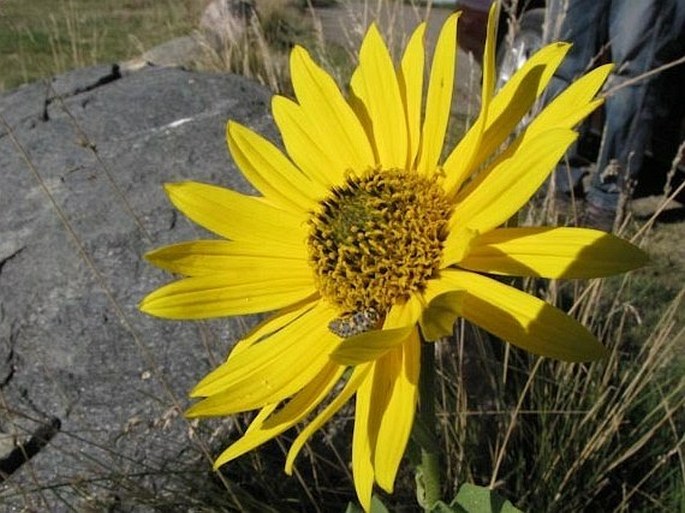
Distribution: Currently most of North America excluding far north and parts of both coasts. But native is in prairie only, most abundant west of Mississippi river.
Ecology: Prefers prairies and full sun in both dry and moist conditions. Invades disturbed areas and grows along the railways and roadways. It can form colonies. Blooms in late summer for about 1 month.
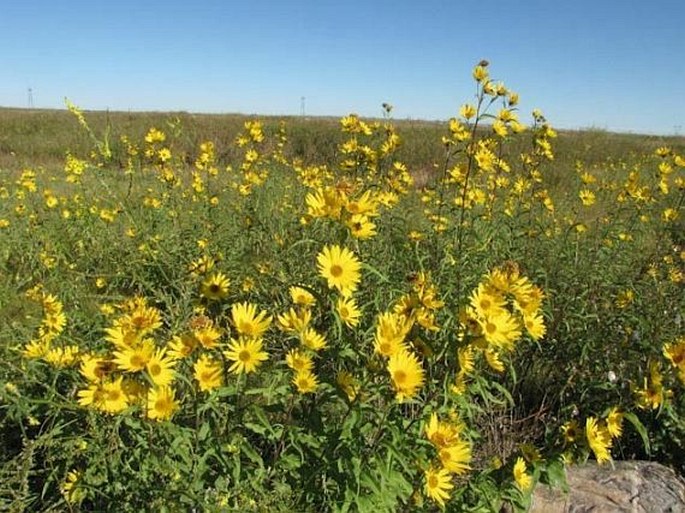
Description: Perennial plant 60–200(–300) cm tall, from fleshy, fibrous, rhizomatous roots. The central stem is stout, round, light green to light red, densely covered with short white hairs. Leaves grow alternately along the stem except for some of the lower leaves which can be opposite. Leaves are up to 30 cm long and 5 cm across. They are sessile and narrowly lanceolate. Both surfaces are light green and covered with fine white hairs. They may have widely spaced small teeth. Flowers grow from the axils of the upper leaves on short erect petioles with possibly 1 or 2 leaves. Each composite flower is 5–8 cm in size with 10–25 yellow ray florets which surround 75+ darker yellow disc florets. Involucres are hemispheric with lanceolate bracts with fine white hairs. The achenes are linear-oblong with a pair of pappi on top.
Usage: The plant is consumed by deer, antelope and cattle. The roots are edible to people.
Notes: This plant was discovered by Prince Maximilian of Wied-Neuwied who organized and participated in an expedition to American West in 1833.
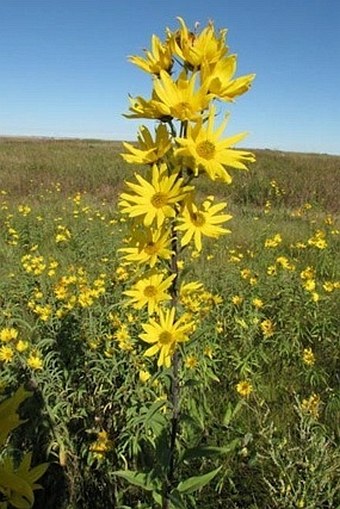
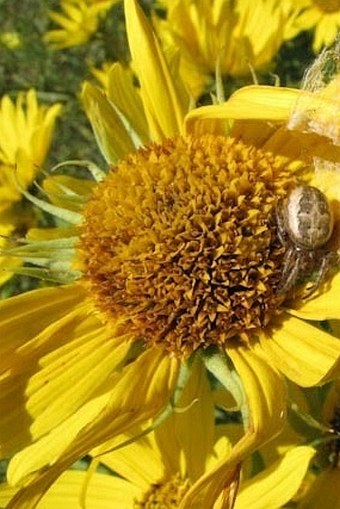
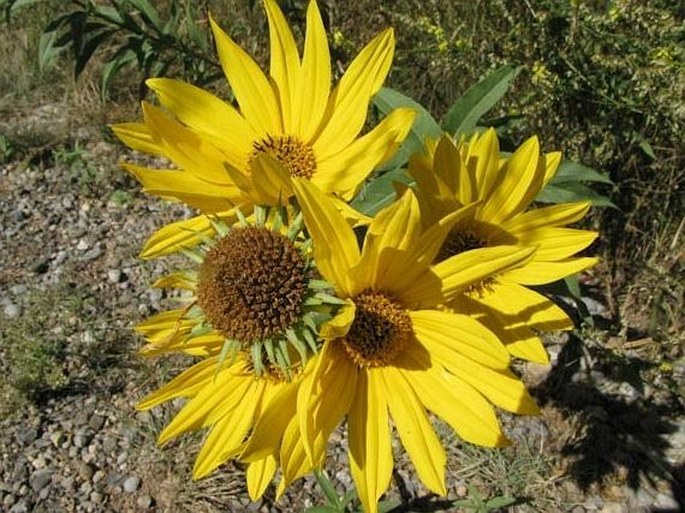
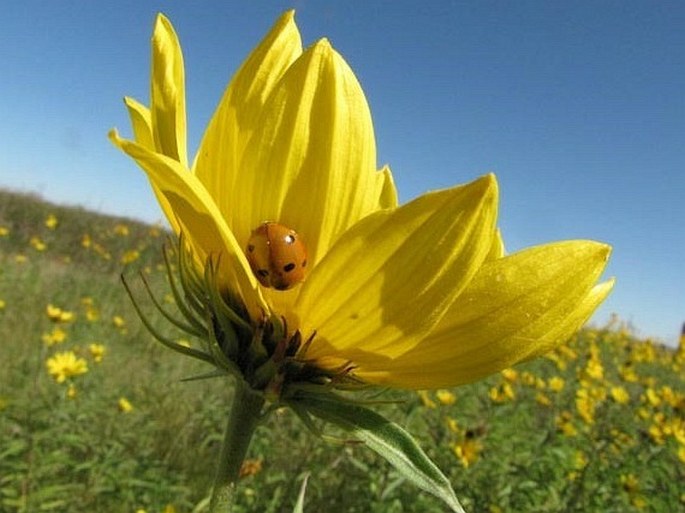
These images were taken in Canada, Alberta, Frank Lake Natural Area (July 2012).


